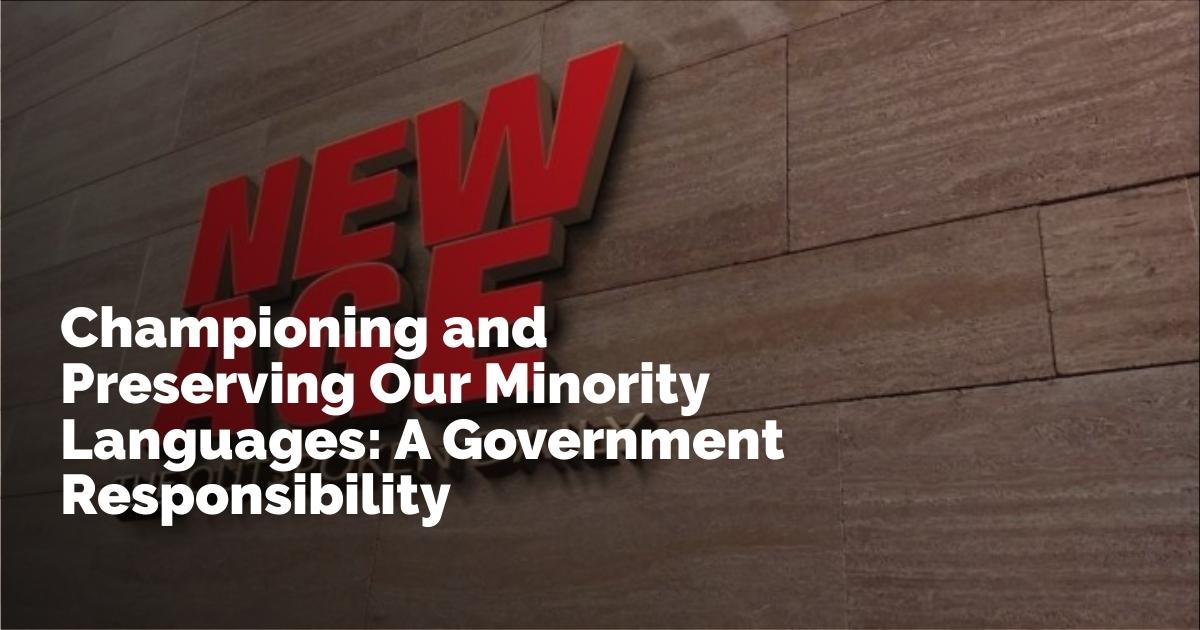Government Efforts to Preserve Minority Languages: Challenges and Prospects
A concerning issue that has come to light is the lack of significant progress in preserving the 40 national minority languages in Bangladesh. The International Mother Language Institute has been struggling to fulfill its mandate of preserving these languages, alongside its responsibility for advancing multilingual education for national minority children, a task supervised by the Directorate of Primary Education. This situation highlights a significant shortcoming on the part of the government, which requires immediate attention and action.
The Role of the International Mother Language Institute
Established in 2010, the International Mother Language Institute was designed with a clear mission: to preserve endangered languages, document and conduct research on these languages, develop necessary writing systems, and compile comprehensive dictionaries. Despite its noble objectives, the institute has unfortunately made little impact since its inception.
One of its key initiatives was a linguistic survey conducted between 2013 and 2018. This survey identified 41 languages in use within Bangladesh, 14 of which are now considered endangered. Despite the completion of the survey, the institute has not published its findings, leaving a gap in available data that could prove crucial to preservation efforts. Alarmingly, the Rengmitca language, which is critically endangered and belongs to the Kuki-Chin group, has seen its number of speakers drop from 40 to a mere six. Additionally, the Kharia language has only two remaining speakers. Such statistics underscore the urgent need for actionable plans to save these languages from extinction.
Writing Systems: A Critical Failure
Of the 41 languages identified, only 18 possess writing systems—though these are often not in active use. The institute has yet to develop writing frameworks for the remaining languages. Written communication is widely regarded as a fundamental component of language preservation, making this a critical area of failure.
The absence of writing systems stalls efforts to effectively teach and promote these languages within educational settings. Without them, the creation of textbooks and other educational materials is severely hampered, impacting the spread and survival of these languages.
Challenges in Multilingual Education
The government's initiative to introduce textbooks in the first language of national minority children from pre-primary to Class III, as outlined in the National Education Policy of 2010, started positively by offering materials in five languages. However, the expansion of this initiative to encompass upper primary classes has not yet occurred, and textbooks have not been produced for languages beyond the initial five.
This stagnation in multilingual education is compounded by a lack of qualified teachers capable of conducting lessons in these minority languages. Particularly in the plains, teachers with the necessary language skills are scarce, and this scarcity is reflected in government-approved school timetables that do not provide sufficient focus on minority language education. In the hill districts, although some teachers are available, they often avoid assignments in rural villages due to political instability and safety concerns.
Political Factors and Their Impact
The political landscape, especially in the Chittagong Hill Tracts, plays a significant role in hindering educational advancement for minority languages. Political stability is essential to ensure that educational initiatives are delivered consistently and safely. The government's failure to secure such stability complicates efforts to post teachers in these regions and reinforces the need for a supportive environment where educational programs can flourish.
The Importance of Education in Language Preservation
Education is fundamentally intertwined with the preservation and promotion of national minority languages. The International Mother Language Institute and the Directorate of Primary Education must, therefore, intensify their efforts to bolster educational programs focused on these languages. The urgency is even greater for endangered languages, as their extinction would result in a profound loss of linguistic, intellectual, and cultural diversity.
Bangladesh's Broader Language Policy
Beyond preserving minority languages, the government should continue to promote Bangla, the state language, across all sectors of national life. Strengthening the role of Bangla while simultaneously championing minority languages forms a comprehensive approach to maintaining the country's rich linguistic heritage.
In conclusion, the preservation of minority languages is not just about maintaining diversity; it is about safeguarding a rich tapestry of culture and intellect that contributes significantly to the nation's identity. Urgent action and sustained commitment from governmental bodies are essential to ensure these languages do not fade into obscurity.
출처 : Original Source

